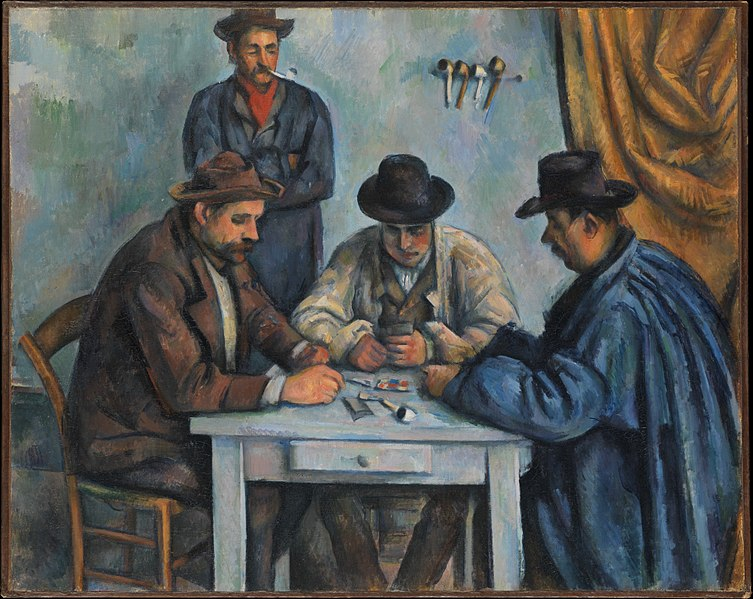Your Cart is Empty
🎁BUY 2, GET 1 FREE + FREE WORLDWIDE SHIPPING 🚚
🎁BUY 2, GET 1 FREE + FREE WORLDWIDE SHIPPING 🚚
The Most Expensive Paintings Ever Sold at Auction
3 min read

Art has always been a status symbol. But once you step into an auction, it becomes a high-stakes game. Some masterpieces have shattered records, selling for prices that rival the GDP of small countries. It’s much more than a matter of beauty – the buyers believe themselves to be the wardens of history, culture, and the respective artist’s legacy.
Though billionaires might drop fortunes on fine art, most people look for value in other ways. Whether it’s investments or gaming, everyone loves a good deal. Even in online casinos, you can find options to suit any budget. The €1 deposit casino lets you enjoy all their premium games for just a tiny deposit. But when it comes to art, the price only seems to be going up. Here’s what makes these paintings worth millions.
‘’Salvator Mundi’’ - Leonardo Da Vinci
Salvator Mundi, or Savior of the World, is one of Leonardo da Vinci’s most mysterious and debated works. Painted between 1500 and 1510, the portrait of Christ holding a crystal orb was lost to history for nearly two centuries. When it finally resurfaced in 2005, it was in poor condition, with layers of overpainting masking its original brilliance. After years of restoration, the painting was authenticated as a da Vinci masterpiece.
In 2017, Salvator Mundi went under the hammer at Christie’s, fetching a record-breaking $450.3 million. It's the highest price ever paid for a painting at auction. This officially made it the most expensive artwork ever sold. Some argue that da Vinci’s Mona Lisa, housed in the Louvre, holds an even greater cultural and financial value. It's estimated to be worth around $970 million!
‘’Interchange’’ – Willem de Kooning
A landmark piece of abstract expressionism, Interchange, was sold at a 2015 auction for a staggering $300 million. Originally painted in 1955, it signifies a shift in de Kooning’s style. His earlier figurative works gave way to a more gestural, abstract approach. In Interchange, there’s a sense of unbound movement and emotion, a signature of the abstract expressionist movement.
It was sold to hedge fund billionaire Kenneth Griffith, who purchased it alongside Jackson Pollock’s ‘’Number 17A’’. Griffith spent a total of $500 million on the two pieces. This record-breaking sale solidified de Kooning as a titan of modern art.
‘’Card Players’’ – Paul Cezanne
Source: Wikicommons
The Card Players by Paul Cézanne is one of the most significant works of Post-Impressionism. It bridged the gap between 19th-century Impressionism and the 20th-century modern art. Painted between 1890 and 1895, it is part of a five-painting series that captures peasants deeply focused on a quiet yet intense card game. The way Cézanne plays with perspective, color, and composition imbues the work with a structured, almost sculptural quality. His approach influenced later modernist movements.
In 2011, one version of The Card Players became one of the most expensive paintings ever sold. The Royal Family of Qatar acquired it for an estimated $250–300 million. This purchase waspart of Qatar’s broader push to position itself as a major cultural hub.
"Nafea Faa Ipoipo" (When Will You Marry?) – Paul Gauguin
Painted in 1892 in the Post-Impressionist style, it is one of the most famous paintings of Gauguin. He painted it during his time in French Polynesia, where he sought inspiration away from European society. He initially traveled to Tahiti in hopes of discovering an ‘’edenic paradise’’. Instead, he found that much of authentic Tahiti culture had been destroyed by colonialism. When Will You Marry captures the cultural tension brought on by colonialism. It shows two Tahitian women – one dressed in traditional wear and the other in a Western-style dress.
In 2015, this masterpiece was sold for around $200 million. The buyer was later revealed to be a member of the Qatari royal family; yet another contribution to the Qatari archive of masterpieces.
‘’Nu Couché’’ – Amedeo Modigliani
One of the most sensual and groundbreaking nudes of modern art, Nu Couché shattered records at auction in 2015. It was sold for 170.4 million at Christie’s to billionaire Liu Yiqqian, a Chinese art collector. It’s believed that this painting was part of Modigliai’s first and only art show at the Galerie Berthe Weill. The exhibition caused such a scandal that police ordered it to shut down because of its provocative nature.
Modigliani transformed "Nu Couché" into a masterpiece by pushing the conventions of form and composition. Contrary to standard academic nudes, he elongated the figure, which made it sculpture-like. A trained eye can spot the rejection of realism in favor of simplified lines and balanced color palettes, which gives the work a dreamlike quality.


